| Author |
 Replies: 14 / Views: 585 Replies: 14 / Views: 585 |
|
|
Pillar of the Community
 United States
6895 Posts |
Many CCF members know that one theme in my collection is coins wth images of a Christian saint, and we had fun here a couple of years ago compiling a collection on this thread: http://goccf.com/t/367831 European principalities featured images of their local patron saints on their coins from around the year 1000 until as late as the 18th century (or in the case of the Vatican, till the present). In many cases the tie between the saint and the place is easily understood. For example, Saint Ambrose and Saint Rupert were early bishops of Milan and Salzburg respectively; Saint Peter was the first bishop of Rome. In some other cases, there was a more circuitous, but still well known explanation. Mark was not the original patron saint of Venice, but became so when a Venetian merchant brought his relics from Alexandria to Venice in 828 A.D. The saints pictured on these three Italian coins have far more obscure connections between the saint and the place, which in each case are separated by some considerable distance (the reverse of each coin is shown first)... 1. Saint Geminianus on a coin of Modena.Tourists who visit Florence and Siena in central Italy often also stop at the medieval town of San Gimignano about mid way between them. Oddly, it is the coins of Modena, about 100 miles to the north, where Saint Geminianus appears, not coins of Tuscany. Here he is on a giorgino (grosso?) struck under Francesco I d'Este (1629-1658):  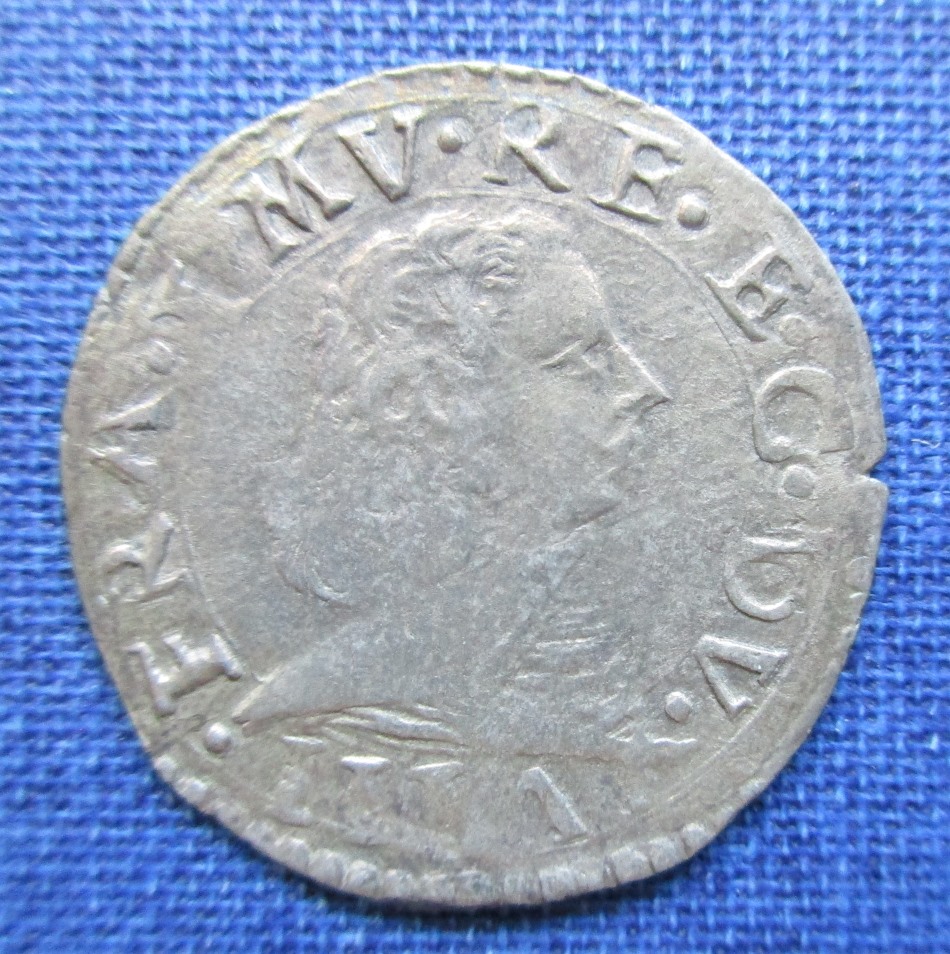 The reverse legend translates to "Our Protector (or patron)" and shows the saint stretching his left hand downward toward a model of the city. Obverse legend translation: Francesco I, 8th Duke of Modena, Reggio and Correggio Edited by tdziemia
01/28/2025 07:51 am
|
|
|
|
Pillar of the Community
 Sweden
2079 Posts |
Ah, interesting!  Looking forward to the other coins! Saint Geminianus seems to have a full schedule. Besides Modena, he is also patron saint for Guiglia, Massa Finalese, Pieve d'Olmi, Pontremoli, San Gimignano, and Vielmur-sur-Agout (in France). I suppose those other towns were too small to have a mint. |
|
Moderator
 United States
157664 Posts |
Very nice!   |
|
Moderator
 United States
32709 Posts |
Yes @tdz. The topic of saints in numismatics is an interesting one, especially coming from someone published in this field.  I look forward to seeing the rest of this thread develop! "If you climb a good tree, you get a push."
-----Ghanaian proverb
"The danger we all now face is distinguishing between what is authentic and what is performed."
-----King Adz
|
|
Pillar of the Community
  United States
6895 Posts |
 Quote:
Saint Geminianus seems to have a full schedule.  Indeed! As best I can tell, he was an early bishop in Modena, with dates in either the 340s or 390s attributed to his tenure. And must have been well-loved, as another source says there was a church in Modena dedicated to him as early as the 5th century. One legend has it that he persuaded the Huns to NOT sack the castle in Tuscany which then became the eponymous town of San Gimignano. But the Huns didn't penetrate the Italian peninsula until around 450, so that's inconsistent with his dates as bishop. No legends linking him to the creation of Italy's most famous vinegar, but it wouldn't surprise me if we run across that, too.  Quote:
The topic of saints in numismatics is an interesting one... Aptly put from my partner in such pursuits! 2. Saint Quirinus of Sescia (Croatia) ... or maybe of Neuss (Germany) on a coin of Correggio (Italy)Get ready to be confused (I am  ). There are several saints bearing the name Quirinus. One was a bishop of Sescia (modern Sisak, Croatia) probably in the late 3d century. Another is a saint of Neuss, Germany, whose legend says he was a Roman soldier who converted to Christianity and was martyred in the persecutions of Diocletian at the beginning of the 4th century. How either of these saints became a patron of Correggio, Italy remains a mystery (at least to me). But what is clear is that the Saint Quirinus pictured on the coin was a bishop, not a soldier, so I am going with the Croatian bishop. The legend on the saint side is S QVIR EPS CORR P, (Saint Quirinus, Bishop. Protector of Correggio), and the coin is attributed to the first counts of Corregio to have struck coins, 1569-1580.  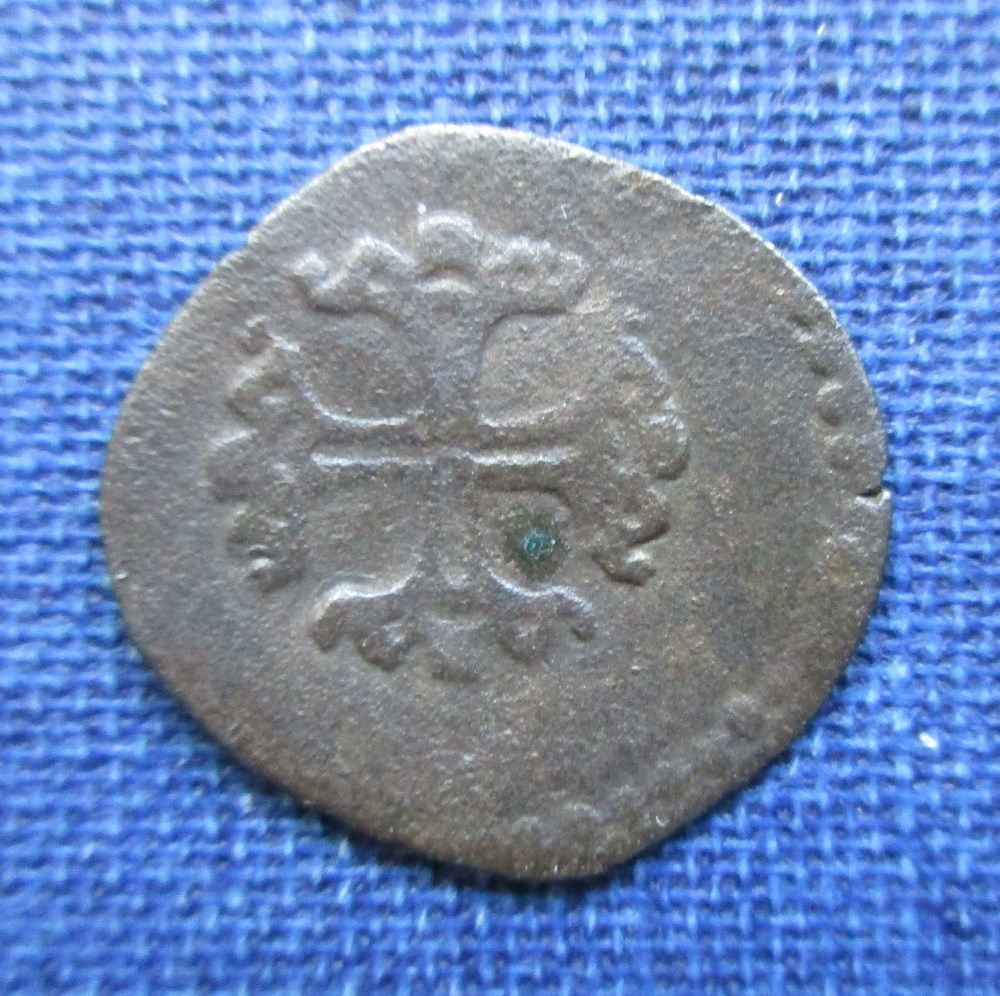
Edited by tdziemia
01/29/2025 10:07 am
|
|
Moderator
 United States
157664 Posts |
Very interesting!  |
|
Pillar of the Community
  United States
6895 Posts |
3. Saint Patrick on a coin of the Duchy of MantuaDon't ask me ... I don't have a clue. Nowhere can I find reference to a Saint Patrick associated with Italy, and the iconography is all wrong for the Irish one. We all know that Saint Patrick is represented wearing a bishop's miter and maybe holding a crozier. But here, it is a young lad in the habit of an altar boy or chorister (maybe a monk?):   The legend on the coin is clearly Sanctus Patritius which, as far as I can tell translates to Saint Patrick... But maybe there is another saint with a similar name (there sure are a lot of 'em!) 
Edited by tdziemia
02/01/2025 09:38 am
|
|
Moderator
 United States
32709 Posts |
That is a bit of a head-scratcher @tdz. At first, I was wondering if it might be from Mantua, Ireland, since there is a "St. Patrick's Bed" there, but that shield on the rev with the four eagles is clearly from the more famous Mantua.
"If you climb a good tree, you get a push."
-----Ghanaian proverb
"The danger we all now face is distinguishing between what is authentic and what is performed."
-----King Adz
|
|
Pillar of the Community
  United States
6895 Posts |
I can only say that the Gonzaga Dukes of Mantua were quite devout judging from their coins. Probably close to a dozen different saints appeared on them including Adrian, Andrew, Anselm, Barbara, Catherine, Francis, George, Longinus, Lucy and Patrick. Many of those are quite specific to Mantua (i.e., I've never seen them on a coin from another place). Usually a search on church names will trun up the saints who had a following in a certain place. Sometimes it's related to the presence of some of the saint's relics via gifts between dignitaries, etc., but Patrick never turns up for Mantua. Probably need an Italian member to solve this mystery  Edited by tdziemia
02/02/2025 06:48 am
|
|
Pillar of the Community
 Sweden
2079 Posts |
Well, I'm not Italian, but I like pasta  . And the Duke of Mantua, Charles II Gonzaga, who issued this coin, is on my radar because he was also Duke and Prince of the French states of Nevers, Rethel and Arches. And from those I have some of his coins, so naturally I felt inclined to look more closely at this mystery! To begin with, the 1661 coin shown here has a precedent. In 1633 and 1635, Charles I Gonzaga (father of Charles II) issued the "same" coin for SANCTVS PATRITIVS: https://catalogo-mantova.lamoneta.i...eta/MN-MNO/7. About the Italian connection, there is actually a well dedicated to Saint Patrick in Italy - Pozzo di San Patrizio. It is located in Orvieto, about 120 km north of Rome. That is quite far from Mantua, which is another 350 km to the north. And, to be honest, while the well is from the 16th century, it could be that it wasn't (re)named after St Patrick until the 19th century. There is also a fresco of St Patrick's Purgatory in the town of Todi, some 40 km from the well. It was made in 1346, plastered over in 1600, and rediscovered in 1974. Theoretically, Charles I (born 1580) could have seen it, but being located quite far from his Italian possessions, it is unlikely. Finally, we have St Patrick's Sanctuary in Colzate in northern Italy. It is from the 15th century and at least located in the same part of Italy as the Gonzaga feudalities Mantua and (Casale) Montferrato. But still, neither Mantua nor Montferrato has any direct association with St Patrick . . .  There was, however, also a chapel dedicated to St Patrick in Charles Gonzaga's Principality of Arches, in northern France. In its capital Charleville (today Charleville-Mézières), there were chapels for both St Patrick and St Brigit, two of Ireland's patron saints. (I don't know if the chapels still exist.) Why that was so is a bit unclear, but it may have to do with Charles I bringing over Irish monks for support in his fight against the Protestants. And why St Patrick then does not appear on the coins of Arches (or Nevers and Rethel), but only on his Italian coins, is also unclear. Perhaps St Patrick was better known in Italy after all, with at least a couple of places where he was revered? |
|
Pillar of the Community
 Sweden
2079 Posts |
In addition: The lamoneta link in my post attributes the parpagliole with St Patrick to Casale, that is, the Duchy of Monferrato, rather than to Mantua. That is based on a document from 1660 that mentions coins denominated "San Patritij di Casale" (which would thus refer to the 1633/1635 issue). The lamoneta page provides a link to an Italian numismatic periodical with an article (in Italian) about that.
|
|
Pillar of the Community
  United States
6895 Posts |
 Eureka! I did not think to pursue the Gonzaga possessions in France, though I knew it existed. I am sure the connection you've found for Gonzagas and St. Patrick is the right one. As for whether the coin is of Mantua or Casale, yes, the coins of the Gonzaga domains are confusing because from the mid-16th century, the Gonzagas are not only Dukes of Mantua but also of Monferrato (you can see that his titles on this coin are DVX MANT MON E C). And I should have thought to look more deeply in Casale (where the coins feature the amusingly named Saint Evasius).
Edited by tdziemia
02/03/2025 3:02 pm
|
|
Moderator
 United States
157664 Posts |
Very interesting!  |
|
Pillar of the Community
  United States
6895 Posts |
@erafjel, I've downloaded the article and will take a look when I have a bit of energy to work on my Italian. Meanwhile, both the CNI (Vol. IV, p. 381 #13/14) and Varesi have it as a coin of Mantua, and there is a very similar design for a parpagliola with Saint Barbara that is clearly from Mantua, where she is one of the known patrons: 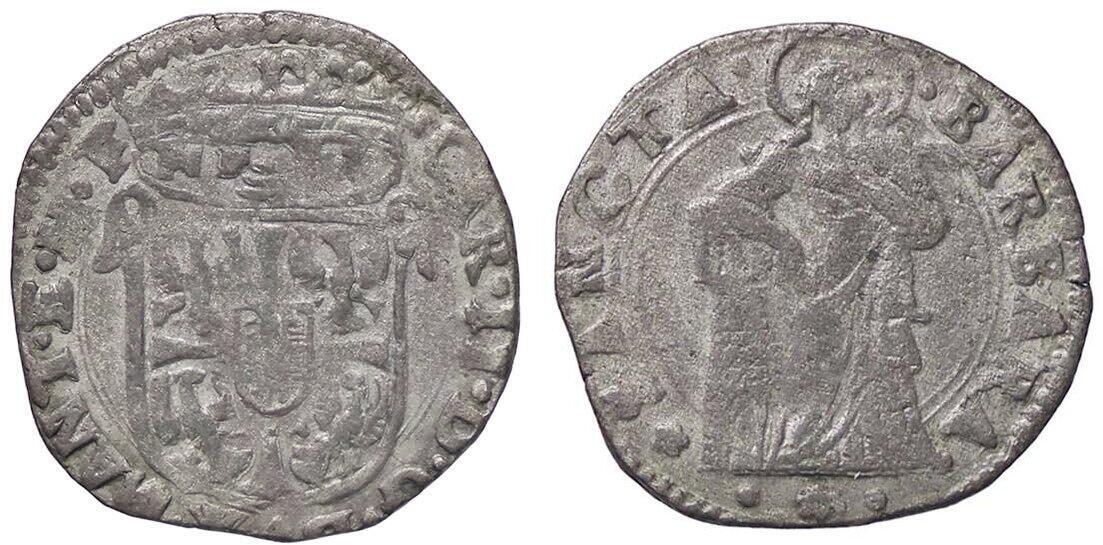 Source: InAsta The St. Patrick type does not come up at auctiom very often. InAsta lists it under Mantua, but Bertolami lists it as Casale. So ... maybe Charles II asked to have a coin of this denomination for each place, with a different saint to distinguish them?  If so, it would be my second saint coin of Casale. The other is this very nice cornuto with Saint Theodore, from the pre-Gonzaga days of Casale: 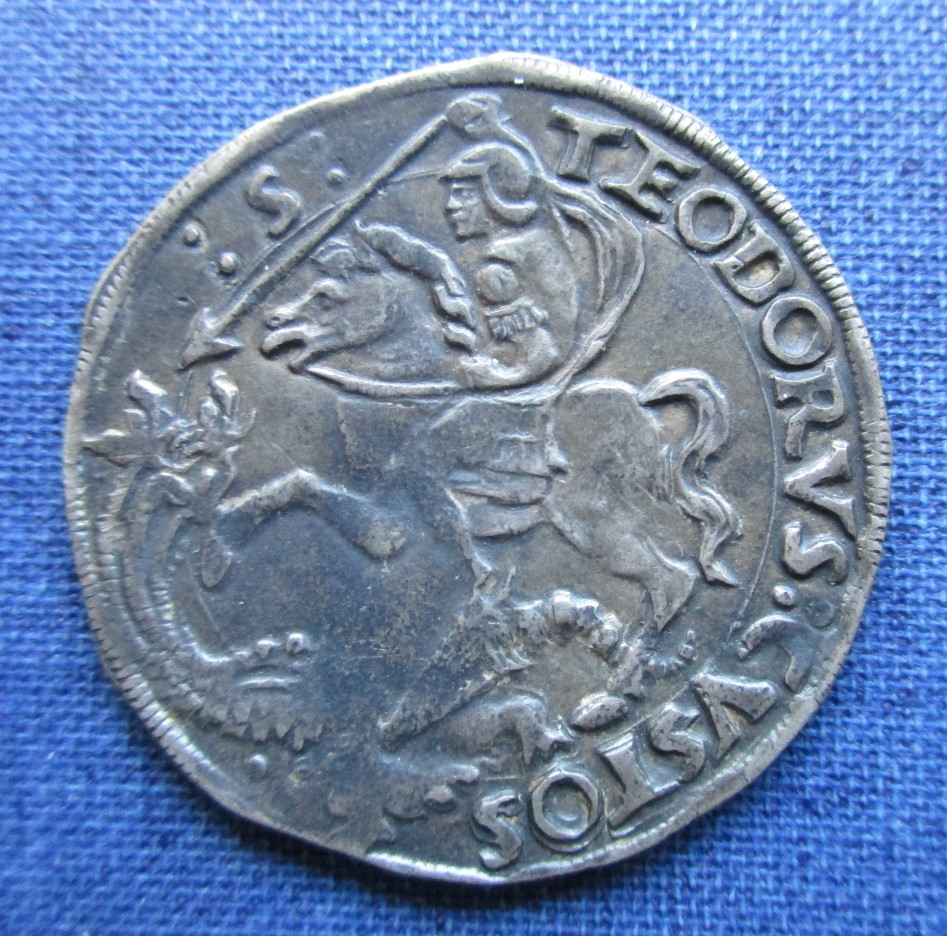 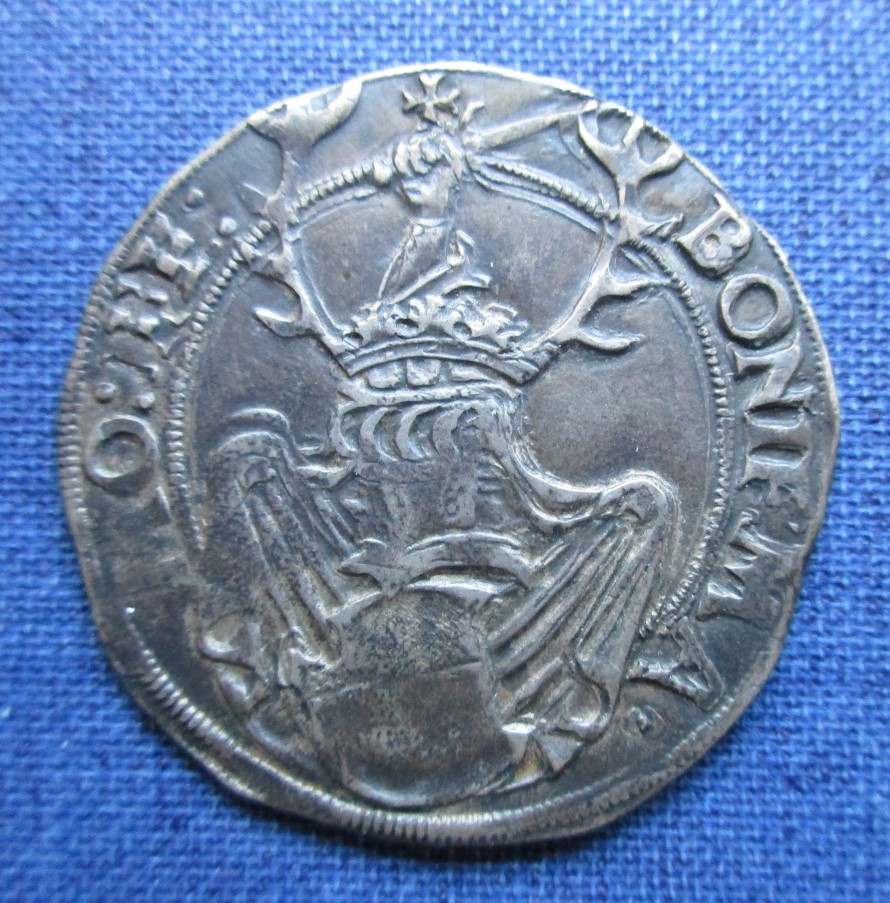 Saint Theodore's connection to Casale is at least explainable. Theodore I was the first marquis of Montferrat from the Paleologus family, the last ruling family of the Byzantine empire, where Theodore was a popular saint. This coin was struck by Boniface IV Paleologus, the fourth great-grandson of Theodore I, who probably used the image to remind folks of the longstanding tradition of rulers from this family. Edited by tdziemia
02/03/2025 3:50 pm
|
|
Pillar of the Community
 Sweden
2079 Posts |
Quote:
this very nice cornuto with Saint Theodore A very nice coin indeed!  I was thinking St George first, but apparently dragon slaying was a sport practiced by more than one saint. 
|
| |
 Replies: 14 / Views: 585 Replies: 14 / Views: 585 |
|

































